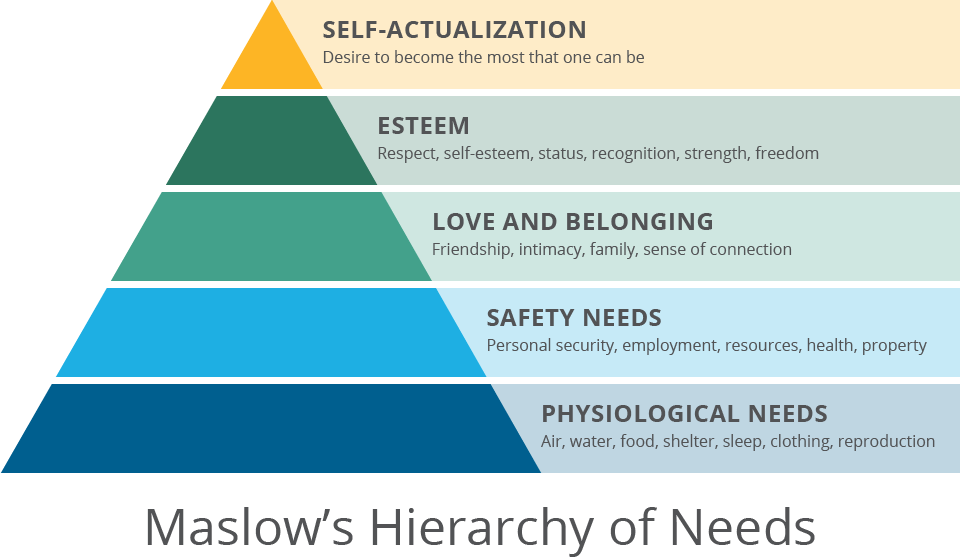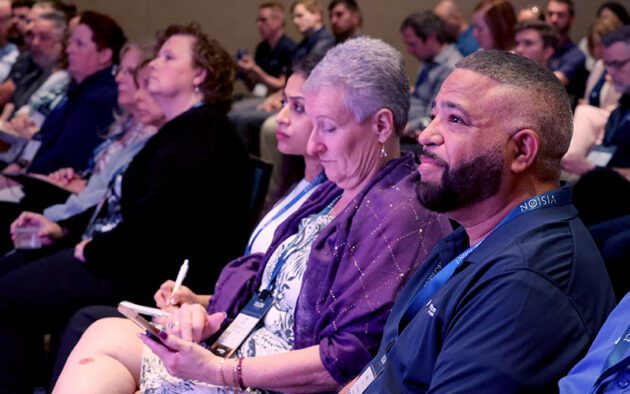While psychologist Abraham Maslow’s widely known ‘Hierarchy of Needs’ framework, introduced to the world eighty years ago, has received some critique over the years—mostly related to research methodologies—it continues to be a hugely popular tool in many settings. The reason is simple: the framework universally resonates, primarily due to being rooted in common sense, contributing to its broad applicability.
This commonsense foundational principle is that one cannot successfully pursue many avenues for personal growth and enjoy sustained feelings of value (i.e., worth, accomplishment, self-actualization) without the satisfaction of basic human needs. This includes having adequate food, shelter and medical needs addressed, feeling physically safe—and after that, having a more emotional, heartfelt connection to other people. That human interaction is often based on sharing commonalities and revolves around mutual respect and admiration. This state of being can be referred to as feelings of belonging—to an individual or group.
We’ll discuss how Maslow’s hierarchy is at play for deskless workers and how integrated, mobile, operational communications allow these employees to feel more engaged and realize their potential.
How Operational Communication Meets Essential Needs
As stated, Maslow’s time-tested framework about human needs influencing human motivations and behaviors has broad applicability. For example, one of the most compelling use cases in a business enterprise involves deskless or frontline workers. As indicative examples, take the case of construction workers on a job site, a nurse in a hospital emergency room, a server in a dining establishment or an assembly line worker, and let’s think about what these individuals might also be thinking about when doing their jobs. Primary candidates would logically include thoughts of their family’s safety, what they’ll eat for lunch, if the foreboding weather pattern might necessitate using a different route home or if a new strain of COVID they heard rumors about is real—and whether it’s nearby.
In the case of these varied circumstances, there is potential for discomfort (from not eating lunch), or worse, the potential for risk or harm to themselves or their family. But it’s only a potential. This is the extra layer of stress that deskless or frontline workers have to deal with in addition to the typically high stressors associated with their daily work.
It’s clear that one reliable way to keep these stress factors at a manageable level is by feeling connected and informed. This is where operational communications come into play, which are integrated with everyday work activities for shift-based hourly workers. Reliable, personalized, location-based alerts sent directly to mobile devices afford frontline/deskless workers invaluable peace of mind.
But as the saying goes, “wait, there’s more,” much more. Beyond physical well-being and assuring safety, the bottom two rungs of Maslow’s pyramid are also about belonging or not feeling isolated. Being part of a group or community often increases one’s chances of overcoming temporary unforeseen circumstances. Engaging, relevant communications in the flow of work offers deskless workers the opportunity to feel a genuine connection to their team members and their organization overall.
Equipping Deskless Workers to Succeed
With our vignette in mind, how can operational communications help these workers reach self-actualization? Alerts about open shifts boost engagement and productivity. One everyday example for deskless workers is when a certain shift they really want becomes available when another worker takes ill at work. Through manual methods, workers would need to connect with a manager before being able to approve this shift swap. But mobile communication platforms that allow employees to automate their roster swaps solves the matter without creating additional administrative tasks. The outcome is likely greater job satisfaction and engagement, hence productivity. But that worker might have to be reached through a mobile phone or pager, so the message would have to be clearly understood with clear instructions, and a way to opt-in for the new opportunity would have to be provided.
Another example would be the case where an employee out in the field is new in a role they truly wanted to succeed in, and they need mentorship to demonstrate they are up to the task. Not having access to or knowing a mentor, including one that is close by, could be an opportunity gone by the wayside as the worker is left to perform their task while they remain confused.
Conversely, integrated communications platforms could push relevant training and information to that worker or identify a few potential and relevant mentors who are available and are in the vicinity. In this situation, we have an employee who in essence has an opportunity to reach the higher peaks of the pyramid, territory where their self-esteem is bolstered, and eventually, where they feel like they are closer to realizing their full potential. Few things in life are more satisfying than that, as we know.
Call to Action: Connect Your Deskless Workforce
There is, of course, a very natural intersection between this discussion about operational communications providing opportunities for feeling productive and valued and the notion of elevating the employee experience. One could posit that deskless workers have not always received all the attention they deserve in delivering great employee experiences. In that light, this article has highlighted how, with the help of modern operational communications capabilities within enterprise systems, deskless workers are not only more likely to feel valued when receiving communications to ensure their physical and psychological well-being, as well as limiting feelings of isolation at work but also find that their overall work experience is enriched.
Organizations today that want to have a better chance of attracting, retaining, and even inspiring deskless and frontline workers to reach greater heights—in both their productivity level AND in their careers—now have another technology capability at their disposal. It’s the ability to communicate personalized, timely, situationally relevant and actionable information and messages in the flow of work, also known as operational communications. Maslow might not have envisioned this manifestation of his framework, but he’d most likely be quite pleased to know how these capabilities help more people have the opportunity to reach their full potential.






